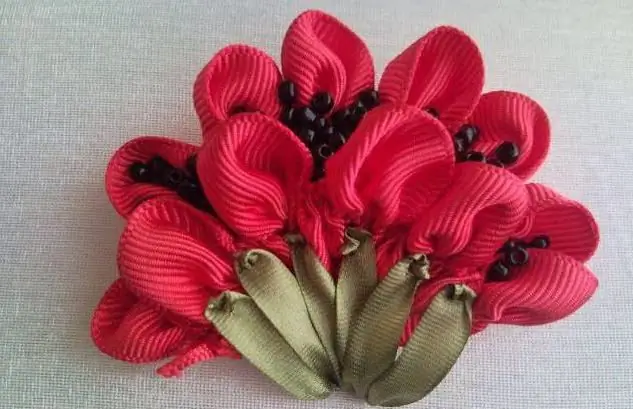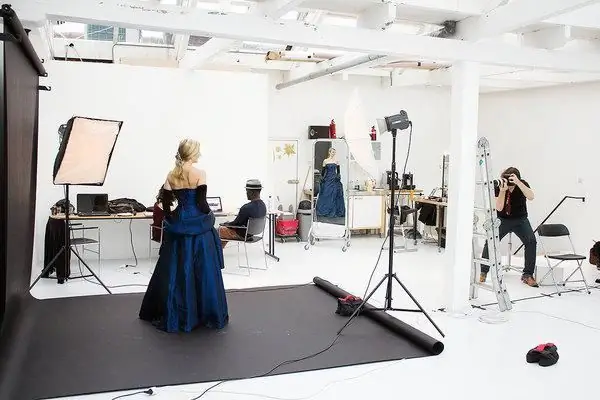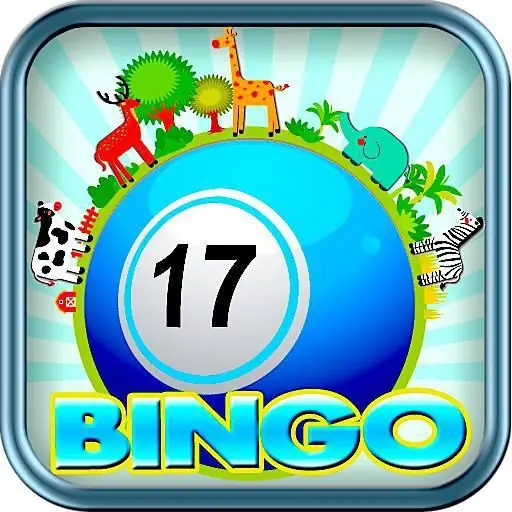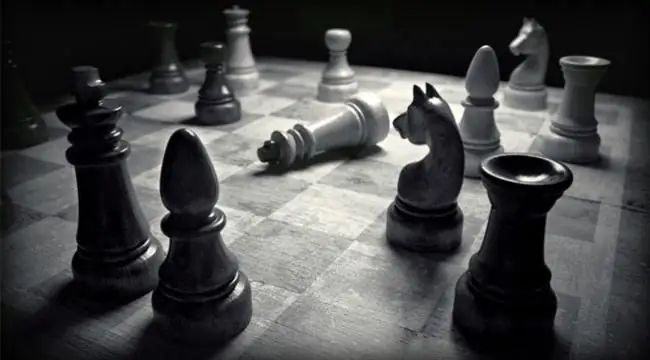
Inhaltsverzeichnis:
- Autor Sierra Becker [email protected].
- Public 2024-02-26 04:44.
- Zuletzt bearbeitet 2025-01-22 22:11.
Es gibt viele Arten von Handarbeiten, aber jetzt gewinnt Stickerei besonders an Popularität. Wie unsere Urgroßmütter vor Jahrhunderten, finden moderne Mädchen in dieser schwierigen, aber aufregenden Tätigkeit Trost und ein Ventil.
Sticken als eine Art Handarbeit
Was ist Stickerei? Wenn Sie einen jungen Mann danach fragen, wird er Ihnen von einer speziellen Maschine erzählen, die das gewünschte Bild mit Hilfe von Fäden sehr schnell und genau auf den Stoff aufträgt. Und er wird Recht haben, aber um wirklich zu verstehen, was Stickerei ist, ist es besser, sich an ältere Frauen oder Spezialisten auf diesem Gebiet zu wenden.
Sie alle werden einhellig sagen, dass Stickerei eine besondere Art von Kunst ist, mit der Sie mit Ihren eigenen Händen schöne Muster und Ornamente auf Kleidung, Tischdecken, Handtüchern und anderen alltäglichen Dingen erstellen können. Und Sie können sogar Bilder sticken, die die Wände Ihres Hauses schmücken und eine gemütliche Atmosphäre schaffen.
Natürlich scheint Handstickerei für viele Menschen ein Relikt der Vergangenheit zu sein. Aber auch die führenden Designer der Welt sind von dieser Handarbeit sehr angetan. So werden Dinge von "Versace", "Prada", "Chanel" mit exquisiter handgemachter Stickerei verziert.
Aktuell sind Kreuzstich- und Plattstich-Stickereien besonders beliebt. Kunsthandwerksläden bieteneine große Auswahl an Kits, Mustern und Handbüchern zum Sticken.

Wie man Kreuzstiche macht
Die Kreuzstichtechnik ist sehr einfach. Allerdings sind hier, wie in jedem Geschäft, Ausdauer und Genauigkeit gefragt. Zuallererst müssen Sie lernen, wie man Stiche richtig macht. Nehmen Sie am besten einen speziellen Stoff zum Sticken. Es ist in jedem Set enth alten, oder Sie können verlangen, dass ein Stück der gewünschten Größe abgeschnitten wird. Dieser Stoff ist in kleine Quadrate unterteilt, was die Arbeit stark vereinfacht.
Kreuzstich ist leicht zu lernen, auch wenn Sie es noch nie gemacht haben.
Sie können ein Kreuz auf verschiedene Arten sticken: von oben nach unten und umgekehrt, Sie können die erforderliche Anzahl von Stichen horizontal machen und dann zurückgehen und die Kreuze fertigstellen.

Bei der ersten Option werden die Stiche von der oberen linken Ecke zur unteren rechten Ecke gemacht. Sie können es in umgekehrter Reihenfolge tun. Die wichtigste Regel ist, immer in die gleiche Richtung zu arbeiten.
Jedes Kreuz besteht aus zwei Maschen. Es ist sehr praktisch, die Elemente eines Farbschemas sofort zu vervollständigen und dann mit den nächsten Komponenten des Bildes fortzufahren. Wenn Sie nach dem Schema einige Zellen zurückziehen müssen, wird der Faden von innen nach außen gezogen. Die nächsten Stiche werden in die gleiche Richtung wie die vorherigen genäht.
Auch wenn Kreuzstiche theoretisch etwas schwieriges und schwieriges für dich zu sein scheinen, lass dich nicht entmutigen. Schließlich muss man nur anfangen, und Sie werden sehen, dass alles viel einfacher ist alses scheint.
Kreuzstiche sind eine großartige Übung, bevor Sie schwierigere Sticktechniken beherrschen. Sehen wir uns eines davon genauer an.
Was ist Bandstickerei
Liebhaber der originellen Einrichtung werden begeistert sein. Eine weitere interessante Art der Handarbeit ist die Bandstickerei. Zum ersten Mal entstand diese Kunst in Italien und verbreitete sich später auf der ganzen Welt.
Bevor Sie mit dem Sticken mit Bändern beginnen, müssen Sie das notwendige Material kaufen. Bänder variieren in Material und Breite. Seide gilt als die hochwertigste, sie sieht wunderschön aus und dank ihnen können Sie sehr kleine Details machen. Satin und Satin sind eine billigere Option, das mit solchen Bändern hergestellte Muster sieht spektakulär aus und die Details sind sehr einfach herzustellen.

Wenn Sie sich entscheiden, Satin zum Sticken zu verwenden, ist es ratsam, keine breiten zu nehmen, da das Bild rau und nicht sehr schön werden kann.
Sticken mit Bändern ist besonders schön, wenn Sie gewellte Sorten mit einer Breite von 6 bis 25 mm verwenden.
Technische Voraussetzungen für Arbeiten
Der Stoff sollte dicht genug sein, damit die Tapes fest sitzen und die Entlastung der Materie nicht stören. Zum ersten Mal können Sie ein Kit kaufen und nach dem Muster sticken. Nachdem Sie Ihre Hand ausgestopft und die nötige Erfahrung gesammelt haben, versuchen Sie sich an der Dekoration von fertiger Kleidung und Accessoires. Bändchenstickereien können Blusen, T-Shirts, Taschen, Handschuhe, Handtücher, Tischdecken und vieles mehr beleben. Sie können ein Bild sticken, es wird Ihr Zuhause schmücken oder großartig seinGeschenk.
Zusätzlich zu Bändern und Stoff benötigst du eine Nadel mit weitem Öhr und ein Feuerzeug, um die abgeschnittenen Enden des Bandes zu verarbeiten (es ist notwendig, dass sich der Stoff nicht weiter auflöst). Aus praktischen Gründen werden normalerweise Reifen verwendet. Wenn Sie sich unwohl fühlen, können Sie sich abmelden.
Was bedeutet Bandstickerei? Es gibt verschiedene Arten von Stichen, von denen die einfachste als gerade oder als Band bezeichnet wird. Es ähnelt dem normalen Nähen - die Nadel wird an die Außenseite des Stoffes gebracht, ein Stich der gewünschten Länge wird gemacht und die Nadel wird auf die falsche Seite gebracht. Je nach Muster können Stiche in verschiedenen Längen ausgeführt werden. Stellen Sie sicher, dass das Klebeband flach liegt. Nur mit diesem Stich entsteht das ganze Bild.

Japanisch und verdrehte Nähte beherrschen
Eine weitere wichtige Nahtart ist die japanische. Wiederholen Sie alles wie in der vorherigen Masche, aber bevor Sie die Nadel von innen nach außen bringen, fädeln Sie sie in die Mitte des Bandes (möglicherweise näher an einer der Kanten, um die Masche scharf zu machen).
Mit Hilfe dieses Stiches erhält die Bandstickerei die Möglichkeit, Blumenstiele oder einen schönen Rahmen darzustellen. Dieser Stich ist sehr einfach zu machen. Bringen Sie das Band an der Stelle, an der das Ende des Stiels geplant ist, zur Vorderseite, drehen Sie das Band dann mehrmals und bringen Sie es auf die falsche Seite unter der Blume. Sie erh alten einen schönen "gedrehten" Stiel.
Dies sind die grundlegenden Stiche, die Sie beherrschen müssen, um zu verstehen, was Bandstickerei ist.
Haben Sie keine Angst, neue Sticktechniken auszuprobieren. Denn was ist Stickerei? Dies ist zunächst einmalManifestation Ihrer Kreativität. Egal, ob Sie sich für Kreuzstiche interessieren oder Bänder bevorzugen, die Hauptsache ist, keine Angst zu haben, damit anzufangen, und Sie werden Erfolg haben.
Empfohlen:
TFP-Shooting ist Was ist ein TFP-Fotoshooting und wie bekommt man kostenlos Fotografie im Studio

TFP-Shooting ist eine für beide Seiten vorteilhafte Vereinbarung zwischen einem Model und einem Fotografen, normalerweise in den frühen Stadien ihrer Karriere. Was bedeutet er, wie entsteht ein Vertrag und was sollte er beinh alten, was sind die Fallstricke dieses Konzepts? Weiterlesen
"Bingo" - was ist das? Ist es ein beliebtes Glücksspiel und mehr?

"Bingo" - was ist das? Dies ist ein beliebtes Glücksspiel, bei dem das Ergebnis ausschließlich von Zufall und Glück abhängt. Um daran teilzunehmen, müssen Sie spezielle Karten kaufen, und um zu gewinnen, brauchen Sie etwas Glück. Diese Art von Lotterie wurde von Millionen von Lotto-Fans auf der ganzen Welt genossen
Schach: Geschichte, Terminologie. Das Leben ist ein Spiel: Zugzwang ist eine zusätzliche Motivation, kein Ende

Schach und Dame sind eines der beliebtesten modernen Spiele. Es ist schwierig, einen modernen Menschen zu finden, der noch nie in seinem Leben Figuren auf einer Schwarz-Weiß-Tafel bewegt und dabei raffinierte Manöver durchgedacht hat. Aber nur wenige Menschen, abgesehen von professionellen Spielern, sind mit der Schachterminologie vertraut. Diese Konzepte werden jedoch häufig verwendet, um reale Ereignisse des öffentlichen Lebens zu beschreiben. "Zugzwang" ist so ein Begriff
Gimp ist Stickerei mit Metallfäden

Gimp ist ein Metallfaden, der zum Sticken verwendet wird. Ihre Produktionsweise wurde als langwierige Angelegenheit definiert. Diese Definition diente als Name für die Threads. Bei der Durchführung ihrer großartigen Arbeit verwendeten russische Meister die Gimpe. Die Bedeutung dieses aus dem Französischen übersetzten Wortes bedeutete nichts anderes als dünne Metallfäden. Nur erfahrene Handwerker könnten dieses Material herstellen
Chevron-Stickerei ist einfach

Chevrons werden heute überall verwendet. Vorbei sind die Zeiten, in denen sie ausschließlich vom Militär getragen wurden. Jetzt sind Patches weltlich geworden, und jeder kann sie in einem Nähgeschäft kaufen. Wie wird eine Chevron-Stickerei hergestellt?
